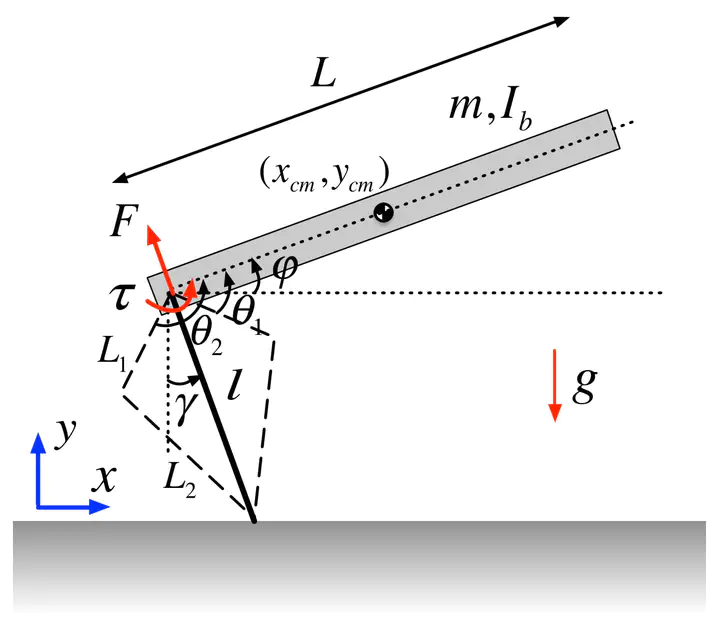
Abstract
This paper explores the applicability of a Linear Quadratic Regulator (LQR) controller design to the problem of bipedal stance on the Minitaur [1] quadrupedal robot. Restricted to the sagittal plane, this behavior exposes a three degree of freedom (DOF) double inverted pendulum with extensible length that can be projected onto the familiar underactuated revolute-revolute “Acrobot” model by assuming a locked prismatic DOF, and a pinned toe. While previous work has documented the successful use of local LQR control to stabilize a physical Acrobot, simulations reveal that a design very similar to those discussed in the past literature cannot achieve an empirically viable controller for our physical plant. Experiments with a series of increasingly close physical facsimiles leading to the actual Minitaur platform itself corroborate and underscore the physical Minitaur platform corroborate and underscore the implications of the simulation study. We conclude that local LQR-based linearized controller designs are too fragile to stabilize the physical Minitaur platform around its vertically erect equilibrium and end with a brief assessment of a variety of more sophisticated nonlinear control approaches whose pursuit is now in progress.